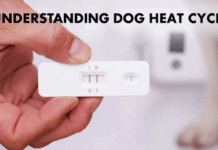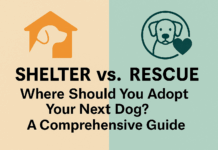Last Updated on March 9, 2024 by Dogs Vets
Can I Take a Loan Out for a Dog? Everything You Need to Know
Bringing a furry friend into your life is an exciting decision, but let’s be honest, it can also be expensive. Between adoption fees, food, vet bills, and training, the costs can quickly add up. So, it’s natural to wonder: can I take a loan out for a dog?
The short answer is yes, but it’s not always the best option. While pet loans exist, they come with their own set of considerations.
This comprehensive guide will delve into everything you need to know about financing your canine companion, exploring alternative solutions, and helping you make an informed decision.
Can I Really Take a Loan Out for a Dog?
Now that we’ve established the financial commitments associated with dog ownership, let’s address the burning question: Can you take out a loan to cover these costs?
Personal Loans: A Potential Solution Yes, you can take out a personal loan to cover the expenses of getting a dog. Personal loans are unsecured loans that can be used for various purposes, including pet-related expenses.
However, it’s important to note that the interest rates and terms can vary based on your credit score and the lender.
Credit Cards: Another Financing Option Using a credit card for pet-related expenses is another option. Some credit cards offer rewards or cashback on pet-related purchases, making it a viable choice if you can manage your payments responsibly.
Understanding Pet Loans
What are pet loans? They are essentially personal loans specifically marketed towards pet-related expenses. These loans typically offer unsecured financing, meaning you don’t need to put up collateral like your car or house. This can be attractive, especially for those with limited savings.
What can you use a pet loan for? While the exact terms might vary depending on the lender, pet loans can cover various costs associated with your dog, including:
- Adoption fees
- Spaying/neutering and microchipping
- Initial vaccinations and preventative care
- Training classes
- Emergency vet bills.
Understanding the Financial Bark
Owning a dog comes with its own set of financial responsibilities. From veterinary bills to food, grooming, and unexpected emergencies, the costs can accumulate.
Before jumping into the idea of a dog loan, let’s break down the typical expenses associated with being a dog parent.
Veterinary Care
The first and foremost expense is veterinary care. Regular check-ups, vaccinations, and unforeseen health issues can significantly impact your budget.
Food and Nutrition
Dogs need a balanced diet to thrive. Quality dog food, treats, and supplements contribute to your furry friend’s overall well-being.
Grooming and Accessories
Maintaining your dog’s hygiene is essential. Grooming tools, shampoos, and accessories are all part of the package.
Training and Behavior Classes
Investing in your dog’s training is not just about good behavior; it’s an investment in a harmonious relationship between you and your pet.
Unexpected Emergencies
No one plans for emergencies, but having a financial cushion for unexpected vet visits or accidents is crucial.
Getting A Loan For A Dog
Taking out a loan specifically for a dog may sound unconventional, but it’s not entirely unheard of. Some lenders offer personal loans that can be used for various purposes, including covering the costs associated with getting a dog.
However, there are essential factors to consider before pursuing this option.
1. Loan Types
Explore different types of loans, such as personal loans or lines of credit, to find the one that suits your financial situation. Be aware of interest rates and repayment terms.
2. Credit Score Matters
Your credit score plays a crucial role in loan approval and interest rates. A higher credit score increases your chances of securing a loan with favorable terms.
3. Responsible Borrowing
Before jumping into a dog loan, evaluate your ability to repay. Responsible borrowing ensures that you don’t find yourself in financial distress later on.
4. Consider Alternatives
While a loan might be an option, consider alternative ways to fund your dog adoption. Crowdfunding, pet-specific grants, or even local animal shelters may provide assistance.
Thinking Beyond Loans: Alternative Funding for Furry Friends
While taking out a loan for a dog is one avenue, there are alternative ways to fund your dream of having a four-legged friend. Let’s explore some creative and resourceful options.
1. Crowdfunding Campaigns
Platforms like GoFundMe allow you to create a crowdfunding campaign to raise funds for your future pet. Share your story and watch the support pour in.
2. Pet-Specific Grants
Several organizations offer grants to help prospective pet owners cover adoption fees and initial expenses. Research and apply for these grants to lighten the financial load.
3. Pet Insurance
Consider investing in pet insurance to mitigate future medical expenses. While it won’t cover initial adoption costs, it provides peace of mind for potential veterinary bills.
4. Local Animal Shelters and Rescues
Explore local animal shelters and rescues that might offer financial assistance or reduced adoption fees. Many organizations are passionate about finding loving homes for animals and may be willing to work with you.
Pros and Cons of Pet Loans
Advantages:
- Spreads the cost: Pet loans allow you to break down the financial burden into manageable monthly payments, making it easier to budget for your dog.
- Improves access to care: If you face unexpected vet bills or need upfront costs for adoption and essential services, a pet loan can help ensure your dog receives the care they need.
- Builds credit: Responsible repayment of a pet loan can positively impact your credit score, potentially improving your access to better loan terms in the future.
Disadvantages:
- Interest rates: Pet loans often come with higher interest rates compared to traditional personal loans. This means you’ll end up paying more than the initial amount borrowed.
- Debt burden: Adding another loan to your existing financial obligations can increase your debt-to-income ratio, making it harder to qualify for other loans in the future.
- Temptation to overspend: Easy access to credit can lead to overspending, especially if you’re not careful with budgeting.
Before You Consider a Pet Loan
Carefully consider these factors before taking out a pet loan:
- Budgeting: Can you comfortably afford the monthly payments, including interest, on top of your regular expenses?
- Alternative options: Explore pet insurance, care credit offered by veterinary clinics, or fundraising options before considering a loan.
- Long-term commitment: Remember, a dog is a long-term commitment, not just a financial one. Ensure you’re prepared for the ongoing costs of food, supplies, and potential health issues throughout their lifespan.
Responsible Pet Ownership and Financial Planning
Financing a dog through a loan should be a last resort. Responsible pet ownership goes hand-in-hand with responsible financial planning. Here are some alternative solutions to consider:
- Adopt, don’t shop: Many shelters and rescue organizations have wonderful dogs waiting for their forever homes. Adoption fees are typically much lower than buying from a breeder.
- Plan and budget: Start saving beforehand to cover initial costs and establish a regular budget for ongoing expenses like food, vet care, and training.
- Pet insurance: Consider pet insurance to help manage unexpected vet bills. This can be a more cost-effective option in the long run compared to relying solely on a loan.
- Explore financing options: Some veterinary clinics offer care credit or payment plans, allowing you to spread out the cost of specific treatments.
Conclusion
While pet loans exist as an option, they should be approached with caution and only after careful consideration. Always prioritize responsible budgeting and explore alternative solutions first.
Remember, welcoming a dog into your life is a lifelong commitment, and ensuring their well-being goes beyond just the initial financial investment.
FAQs:
1. Are there any specific pet loan providers?
Several lenders offer pet loans, including traditional banks, credit unions, and online lenders. It’s crucial to research and compare loan terms, including interest rates, repayment periods, and any associated fees before choosing a provider.
2. What is the typical credit score needed for a pet loan?
Lenders have varying credit score requirements for pet loans. Generally, a good credit score (typically above 670) will be required to qualify for the most favorable terms.
Are there specific lenders that offer loans for pets?
While some lenders offer personal loans that can be used for various purposes, it’s crucial to research and choose a reputable lender with reasonable terms and interest rates.
Can I use a credit card to cover dog-related expenses?
Yes, using a credit card is another option. Ensure you understand the interest rates, and use it responsibly to cover your pet-related costs.
Are there grants available for pet adoption?
Yes, several organizations provide grants to assist with pet adoption fees and initial expenses. Research and apply for these grants to support your furry friend’s arrival.
How do I create a successful crowdfunding campaign for a dog?
Tell a compelling story, share your passion for having a pet, and explain how the funds will be used. Utilize social media and engage with your network to maximize support.
Can I negotiate adoption fees with a shelter or rescue?
While some organizations may be open to discussions, it’s essential to respect their policies. Focus on providing a loving home and inquire about any available assistance programs.
What factors should I consider when budgeting for a dog?
Consider veterinary care, food, grooming, training, and emergency expenses. Creating a detailed budget will help you plan for the financial commitment of pet ownership.
Are there local organizations that provide financial assistance for pet owners?
Yes, some local animal welfare organizations may offer financial assistance or resources to pet owners in need. Reach out to your community to explore available support.
Facts Check
We hope you enjoyed this article… What are your thoughts?
Pls feel free to share this article!

















